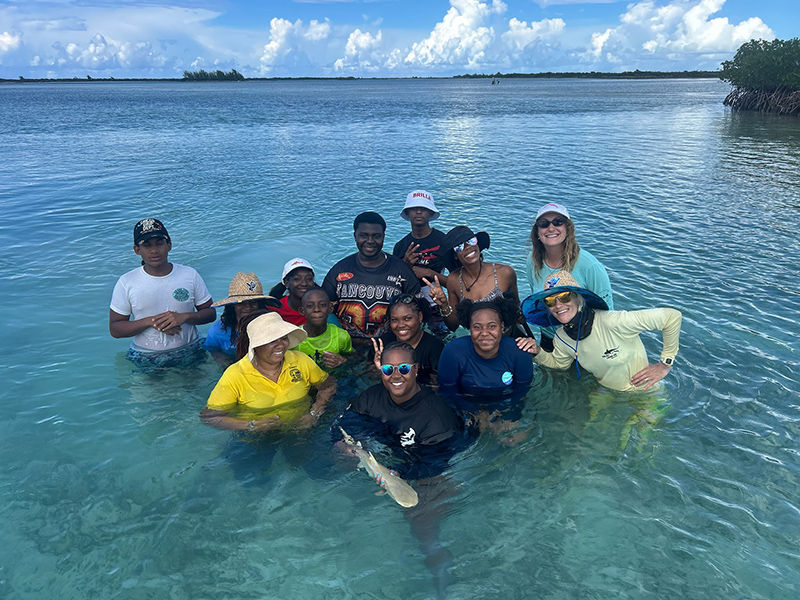October Elasmobranch of the Month: The Chimaera
- Sharks4Kids

- Oct 24, 2023
- 3 min read
October Elasmobranch of the Month: The Chimaera
The Chimaera
Chimaeriformes
Happy Halloween! It’s the spookiest time of the year, and what better way to celebrate than by learning about the ocean’s most mysterious elasmobranch?

What is a Chimaera?
Chimaeras are one of the most alluring creatures of the deep sea. In mythology, the term “chimaera” refers to a creature made of numerous animal body parts. For instance, Ancient Greeks believed in a powerful chimaera with the body of a lion, the head of a goat, and the tail of a serpent’s head.
In reality, chimaeras have lateral lines on their skin, giving the appearance of seams being stitched together. With their rabbit-like teeth, shark-like bodies, and rat-like tails, chimaeras are known by a variety of nicknames, including the rabbitfish, ghost shark, rat fish, and spook fish.
However, chimaeras are actually cartilaginous fish, having evolutionarily split from sharks, rays, and skates 400 million years ago. There are 50 known species of chimaeras, which can be sorted into three main groups: plow-nose chimaeras, long-nose chimaeras, and short-nose chimaeras.
Key Features & Appearance
Those who are lucky enough to catch sight of a chimaera will immediately notice their eyes. The chimaera’s large eyes are so translucent that they nearly look glow-in-the dark. However, they are essential to finding prey in the darkest depths of the ocean.
The rest of the chimaera's body is smooth, growing anywhere from 60-120 centimeters. They can be found in a variety of colors, including brown-grey, pale blue, and black. Their head, pectoral fins, and pelvic fins are relatively bulky, while their tapered tails are long and sleek. In fact, some species of chimaera even have venomous spines to protect themselves from predators!

Habitat & Distribution
It can be difficult to study chimaeras, or to even spot them at all. Chimaeras live in the deep sea, with most living in depths of at least 500 meters, though there are certain coastal species. With the exception of the Arctic and Antarctica, chimaeras are found in temperate and cold waters all around the world. Staying close to the seafloor, chimaera remain far out of reach of most humans.
Diet
In remote parts of the ocean, a good meal can be hard to come by. With limited choices, chimaeras are “opportunistic feeders”—in other words, they’ll eat whatever they can find. Chimaeras have three rows of teeth that are used to prey on small fish and bottom-dwelling invertebrates, such as clams, crabs, marine worms, and octopuses.
Reproduction
Chimaeras lay eggs to reproduce, making them oviparous. Typically, female chimaeras lay two eggs simultaneously, though the number of egg pairs laid per season is currently unknown. Depending on the specific species of chimaera, their eggs can take from six months to one year to hatch.
Threats
Today, human overfishing practices pose the biggest threat to chimaera. Deep-sea trawling is particularly harmful, as chimaera spend much of their time on the seafloor and are often victims of bycatch. When caught, they are either discarded or kept as “valued bycatch”, though they are unlikely to survive away from their normal depths.
Status
The IUCN has difficulty in assessing the status of chimaera because of their inaccessible habitats. Currently, many chimaera species are listed as “Data Deficient”, meaning that there is not enough evidence to assign them a conservation status.
So far, only eight chimaera species have been evaluated, with four listed as “Vulnerable” and the other four as “Near Threatened.”
Fun Fact
Did you know that chimaera have been known to live up to 30 years? Some researchers believe that they may be able to live even longer!
References
Boyd, Stephanie. “Chimaeras.” Texas Saltwater Fishing Magazine, www.texassaltwaterfishingmagazine.com/fishing/education/fishy-facts/chimaeras.
“Chimaera from the Deep.” Smithsonian Ocean, 11 May 2023, ocean.si.edu/ocean-life/fish/chimaera-deep.
“Chimaera.” Encyclopædia Britannica, Encyclopædia Britannica, inc., www.britannica.com/animal/chimaera.
“Chimaera.” The Shark Trust, www.sharktrust.org/chimaera.
“Chimaeras, the Sharks’ Forgotten Cousins.” Save Our Seas Foundation, 29 Oct. 2019, saveourseas.com/update/chimaeras-the-sharks-forgotten-cousins/.
“Chimera.” Encyclopædia Britannica, Encyclopædia Britannica, inc., www.britannica.com/topic/Chimera-Greek-mythology.
“The IUCN Red List of Threatened Species.” IUCN Red List of Threatened Species, www.iucnredlist.org/.
“Opportunistic Feeding.” Discovery of Sound in the Sea, 27 Feb. 2017, dosits.org/glossary/opportunistic-feeding/#:~:text=a%20type%20of%20foraging%20in,to%20whatever%20food%20becomes%20available.
“Overfishing Puts More than One-Third of All Sharks, Rays, and Chimaeras at Risk of Extinction.” WWF, World Wildlife Fund, 8 Sept. 2021, www.worldwildlife.org/stories/overfishing-puts-more-than-one-third-of-all-sharks-rays-and-chimaeras-at-risk-of-extinction.
US Department of Commerce, National Oceanic and Atmospheric Administration. “Creatures of the Deep: Chimaera.” Ocean Today, 5 July 2011, oceantoday.noaa.gov/creaturesofthedeep_chimaera/.





















